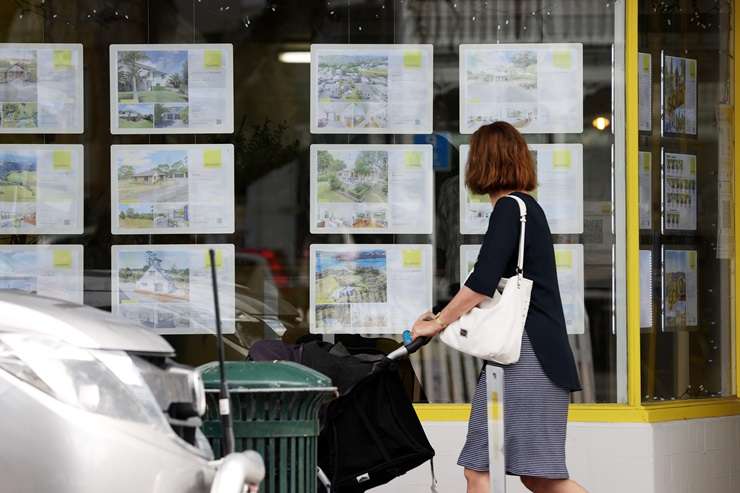Homeowners holding on for interest rate relief are unlikely to be rewarded anytime soon, with most of the country’s bank economists picking February next year as the date of the first drop in the Official Cash Rate (OCR).
While they all think New Zealand’s inflation is too “sticky”, none believe the Reserve Bank will up the ante in its fight and lift interest rates again.
The Reserve Bank is set to deliver its next OCR decision on July 10, a week before the inflation figures for Q2 2024 are released. Inflation for Q1 came in at 4%, above the Reserve Bank’s target rate of between 1% and 3%.
Following May’s OCR announcement, the Reserve Bank warned that interest rates may need to stay higher for longer than previously forecast, saying domestic inflation was proving stubborn.
Start your property search
The global picture is mixed. Across the ditch, the Reserve Bank of Australia has kept the cash rate at 4.35% but said the path to lower inflation had narrowed. The country’s inflation rate is sitting at 3.6% – above the target band – sparking warnings from the central bank that recent data “reinforced the need to remain vigilant to upside risks to inflation”.
In the UK, inflation has dropped to 2.3%, but core inflation is still high, dashing hopes of a swift rate cut, whereas hopes of rate relief in the US are rising following better-than-expected inflation numbers there.
Kiwibank forecast - first rate cut in November 2024
Kiwibank’s forecast is the most bullish, with the bank’s economics team picking November 2024 for the first of the OCR cuts.
Senior economist Mary Jo Vergara told OneRoof: “November still looks like a likely starting point for the rate-cutting cycle to begin, because by that time inflation should be back within the band and on its way to 2%.

Senior economist Mary Jo Vergara is picking November 2024 for a rate cut. Photo / Fiona Goodall
“The economy will be much weaker, so that should continue driving domestic inflation lower, which is key for us to get back to 2% overall. Unemployment also will be on the rise, heading towards a 5% to 5.5% unemployment rate peak. In that economic environment, it does suggest that the Reserve Bank can begin giving the rate relief that everyone’s been after for a while.”
ANZ forecast - first rate cut in February 2025
ANZ’s economists told OneRoof their position on the OCR had not changed since their forecast last month of a February cut (three months earlier than it had previously predicted).
“The RBNZ’s concern about the run of higher-than-expected domestic inflation is understandable, but we expect that meaningful progress is around the corner. The real economy is very weak,” ANZ’s economists wrote.
“Before cutting the OCR, the RBNZ needs to not only be confident that inflation is on its way to 2%, but that it can be reasonably expected to stay within the 1%-3% target band.”
They felt that inflation would be running at 2.6% and unemployment at 5% by February next year. “That should do it, in our view.”
ASB forecast - first rate cut in February 2025
ASB’s economists are picking a February cut, but they also believe there is a chance the Reserve Bank will act in November. Senior economist Kim Mundy said: “We are seeing some signs in some of the more recent data that suggest that the risk is tilted to those cuts coming earlier, so possibly by the end of this year.”
Like the other banks’ economists, Mundy said what’s happening overseas mattered, citing the stickiness in the UK inflation numbers. “The Bank of England is forecasting inflation to pick up again over the second half of the year, so that is playing into the hesitation to start cutting rates [there].”

The housing market has felt the pressure of higher-for-longer interest rates. Photo / Fiona Goodall
Mundy said there was stickiness in some of the more domestically generated inflation in New Zealand, noting there were “pockets of heat” in the economy stopping inflation from falling to its target band.
However, “we think the economy will be in a position where it is prudent to start cutting interest rates by February 2025. If anything was to cause the Reserve Bank to move ahead of that, it would be a quickening in the deterioration in the economy”.
“One of the easiest ways that businesses can restore profitability is through trimming labour costs,” Mundy said. Workers being “let go” would help bring consumer demand down, which could see the economy move to where it needs to be for an earlier OCR cut.
BNZ forecast - first rate cut in February 2025
BNZ chief economist Mike Jones thinks the Reserve Bank will choose to act at its first meeting of 2025 but, doesn’t rule out a cut in November either.
“On the one hand, you have economic indicators that are, if anything, deteriorating. At the same time, inflation is too high. You’ve got those elements of stickiness, some of the components, and now, some extra risk from oil prices and freight costs. So, it is a case of getting inflation back to target without prolonging that pressure the domestic economy's under,” Jones told OneRoof.

BNZ chief economist Mike Jones: "We're not there yet, but I do think the ducks are lining up on that front.” Photo / Fiona Goodall
“Our best guess is still that the Reserve Bank goes in February,” he said, noting that the financial markets were picking a November rate cut.
Asked what it would take for the Reserve Bank to go early, Jones said the bank would not need to be confident inflation was going to stay within its target range. “That’s their primary objective. We’re not there yet, but I do think the ducks are lining up on that front.”
Westpac forecast - first rate cut in February 2025
Westpac chief economist Kelly Eckhold said the Reserve Bank won’t have enough data to make a call on inflation and rates until February.
“The key thing is confidence about [the direction of] inflation, whereas I think a lot of people in the market and commentary have been focused on some of the weaker economic data we’ve seen recently," he said.
“If we get a lower Consumer Price Index number, perhaps in the next couple of quarters, then obviously an earlier move becomes more likely.”
Eckhold said New Zealand, like the UK and the US, had stubbornly high core inflation. “If you rank us up in terms of the level of core inflation compared to, say, long-term averages, you’ll see that New Zealand’s inflation has been relatively high compared to countries like Sweden and Canada.”
He felt that the Reserve Bank Governor, Adrian Orr, was doing the right thing. “I think they need to keep the interest rates at current levels until they see some of that particularly services sector inflation start to come down. The weaker economic data that we see should give you confidence that you will see those signs at some point. But one of the things about this post-Covid environment is that a lot of the lags have been a little bit more uncertain than what would ordinarily be the case.”
- Click here to find properties for sale







































































